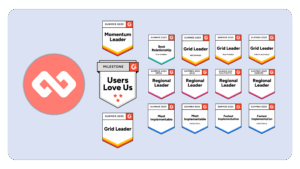
Not every curve needs flattening in a pandemic. There is one we can raise: the curve of mentorship.
Admittedly, professionals are overcommitted both at home and at work. Managing a household and a career creates tension to the point of extreme stretch. Feeling too busy doesn’t feel good. Forced to focus on our own health and survival, we are tempted to scale down commitments and skim from the top the seemingly optional tasks.
About the Authors:
Adaira Landry, MD MEd is an Assistant Professor at Harvard Medical School and an Emergency Medicine physician at Brigham and Women’s Hospital. She focuses on mentoring at the student and physician-in-training level. Dr. Landry can be reached on Twitter at @AdairaLandryMDResa E. Lewiss, MD is a Professor of Emergency Medicine and Radiology at Thomas Jefferson University Hospital. She serves on the Executive Committee of the Women’s Leadership Council of Brown University. She is the creator and host of the Visible Voices podcast which amplifies voices and perspectives on Health Care, Equity, and Current Trends. Find her on twitter at @ResaELewiss

Mentorship may not make the cut as it is a professional commitment that is mostly unpaid, uncompensated, and under-recognized. However, we need to reframe the conversation on mentorship and the attention it deserves. And mentors deserve to live a meaningful life: one with value and with purpose.
Mentorship can answer this call for meaning, without depleting mentors of time or energy. The resources needed to support a mentor-mentee relationship can be daunting. One article suggests upfront work taking classes or picking up projects related to skills your mentee wants to develop. This raises the barrier of mentor initiation. Mentorship need not consume your calendar or overwhelm your email inbox. You can efficiently interact with mentees, while simultaneously increasing the impact of your mentoring, Mentorship helps mentees access established leaders, as well as opportunities for collaboration. However, it is not one-sided: mentors benefit greatly through these relationships: career longevity, career networking, increased opportunity for promotion, job satisfaction, recognition from supervisors, and potential legacy. Creating space and priority for yourself allows mentorship to be a source of renewed energy.
This is a mentorship strategy we call fuel-efficient mentoring (Table 1).
Energy Saving Scheduling
Efficiency begins with the mentor. Start with a calendar self-audit to determine your realistic availability. Each mentee has personal needs, one mentee might need 2-6 hours/year while another might require 12-24 hours/year. Assess the needs of the mentee and compare them to your realistic bandwidth. An incompatibility in their needs and your bandwidth is a reason to reflect on the likelihood of a successful pairing. The request to be a mentor is incredibly flattering, however, it is still a commitment even when best optimized. If your schedule limits your time to mentor, the best thing to do is decline politely and offer alternative mentors, who are interested and available. Encourage the students to research the mentors and consider sending the introduction between the two.
Designating space between meetings is a crucial step to managing the relationship. Budget time intervals so that your commitment maintains a sense of balance while also matching the needs of the mentee. When scheduling follow-up meetings, be sure to discuss the time frame to ensure that the mentee has the time needed to be productive.
Inefficient meetings expand to take up the time allotted. Rarely do they end early. Learn how to optimize meetings, then consider strategically shortening them. The same agenda can likely be accomplished in less time. This is fuel-efficient mentoring at work. For instance, when a mentee requests a meeting, decide if 10 or 20 minutes is sufficient instead of 30. Longer agendas might be resolved within 40 or 50 minutes instead of 60. This compels the mentee to be focused, organized with questions, and prepared for the meeting. Reserving time takes energy; preemptively schedule all regular meetings for the entire year early on. Remind the mentee to contact your administrative staff, if available, to reschedule or cancel meetings.
Strength in Numbers
Erase that traditional mentorship relationship image: two people focusing their interaction on one:one in-person meetings. It is a functional system, however, the potential of the relationship is greatly restricted. Mentoring circles are an efficient and effective alternative to the dyad relationship — aggregate multiple mentees of similar interests, goals, or experience, for instance. Instead of meeting with 3 mentees individually for one hour each, meet with 3 mentees altogether. While not suitable for every situation, the benefits are grossly evident. Mentees are able to learn from each other and share perspectives, building the stage for peer-to-peer mentorship, advice and subsequent validation of shared experiences. For the mentor, this is time-efficient and increases reach without crowding a calendar. It is fuel-efficient.
Your networking opportunities are your mentees’ potential opportunities, too. Augment scheduled time commitments at socials, meetings, or on scholarship, by inviting your mentee to join. If mentees attend socials with you this allows them to expand their network and also to see and appreciate your influence professionally. Inviting mentees to meetings or lectures allows them to see the details of your field and better understand your career. Lastly, inviting mentees to co-author papers or co-facilitate didactics allows skill-building, as well as scholarly activity to add to their curriculum vitae. Note: all of these activities were tasks you would have completed alone. Adding a mentee brings an entire new purpose to these events.
Energy Saving Communications
Communicate your expectations on relationship maintenance with mentees. Lead with details of your expectations and provide a framework for personal practices. For instance, we recommend that mentees be responsible for arranging meetings and would specify that includes the practice of sending calendar invites and setting and sharing the agenda. This teaches responsibility and accountability and allows you to focus time on the mentees’ bigger needs.
Consider the use of technology; not all meetings need to occur synchronously. In fact, some meetings can be transitioned into email. There is also software or even cellular applications that allow mentees to send voice messages that can be listened to later and replied to with audio or text when convenient.
Lastly, if you receive similar themes of email requests from mentees, bookmark and organize your responses and regift them. For example, if a mentee requests guidance on time management, your general advice might be the same for all with some specific areas adjusted for the particular mentee.
Reduce Nonessential Energy Expenditures
Unfortunately, not all mentor-mentee relationships are helpful or productive. Realizing this can be difficult and feel personal. The relationship may fail.5 There are many reasons for this: communication style, schedule conflicts, or mentor expertise and interest. If despite your best efforts the relationship is stagnant, it is best to address the unsuccessful pairing and model to the mentee how to redirect a relationship so that the mentee’s needs are met. This is taking care of your mentee and this is taking care of yourself. Realizing this promptly and making healthy and professional changes will mitigate negative feelings toward the relationship. If you have never had a difficult conversation regarding an unsuccessful pairing, we recommend speaking with a mentor for guidance. This will ease discomfort or unintended harm during the conversation with the mentee. While it saves time and requires less energy to allow a struggling relationship to dissolve informally, we recommend organizing a conversation that is healthy and free from judgement. End the conversation with closure but also an openness to be contacted in the future. As above, refer mentees to other potential mentors to keep them feeling connected and supported.
We do not claim fuel-efficient mentoring as easy or full proof. It does not completely replace the traditional mentor-mentee construct. As admittedly, this approach does not completely replace one to one meetings nor does it discount the need for individualized mentorship. However, it is strategic and a way to optimize your time and energy so that you are able to mentor more individuals for longer periods of time.
Table 1: Fuel-Efficient Mentoring Strategies:
| Strategy | Example | Benefit to Mentee | Benefit to Mentor |
| Energy Saving Scheduling | Set expectations on meeting commitment (ex: 3-6 hours per academic year) Reduced time slots: Offer 40, 20, or 10-minute meeting slots rather than 60 or 30 minute Schedule all meetings for months up to one year out all at once Assess if a synchronous meeting is critical | Organization skills Clear communication | Time efficiency Burnout prevention Control over calendar |
| Strength in Numbers | Combine mentees into mentoring circles Invite mentees to work-related events, meetings, or scholarly projects | Peer mentoring Learn from the questions of others Meet more mentors Networking | Time and information sharing efficient |
| Energy Saving Communications | Expectation setting Save emails that can be templated as commonly asked questions Work asynchronously, set up email and list-serv for mentees | Information gathering Building of information and resources | Streamlined and organized communications |
| Reduce Nonessential Energy Expenditures | If pairing isn’t working, address to avoid time and energy drain. Okay to decline opportunity to mentor, always connect them to another person. | Learn about having difficult conversations related to collaboration | Burnout prevention Experience with difficult conversation Experience with providing feedback |
Are you ready to unlock the incredible benefits of fuel-efficient mentoring? Chat to one of our mentoring experts, today to discover how easy it is to get started, with Mentorloop.




